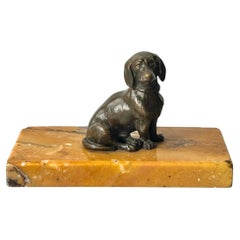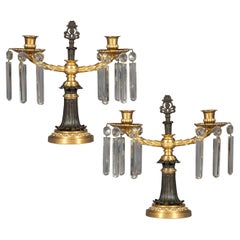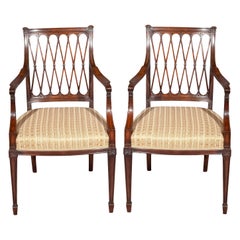Want more images or videos?
Request additional images or videos from the seller
1 of 20
19th Century Bronze Bust of Dionysus by Sabatino de Angelis
$22,655.68List Price
About the Item
- Creator:Sabatino De Angelis (Maker)
- Dimensions:Height: 24.41 in (62 cm)Width: 17.72 in (45 cm)Depth: 13.78 in (35 cm)
- Style:Classical Roman (In the Style Of)
- Materials and Techniques:Bronze,Patinated
- Place of Origin:
- Period:
- Date of Manufacture:circa 1890
- Condition:Wear consistent with age and use. Ready for placement and immediate enjoyment. Superb original patination.
- Seller Location:Richmond, GB
- Reference Number:1stDibs: LU1781228390312
About the Seller
5.0
Gold Seller
Premium sellers maintaining a 4.3+ rating and 24-hour response times
Established in 2014
1stDibs seller since 2016
237 sales on 1stDibs
Typical response time: 1 hour
Associations
LAPADA - The Association of Arts & Antiques Dealers
Authenticity Guarantee
In the unlikely event there’s an issue with an item’s authenticity, contact us within 1 year for a full refund. DetailsMoney-Back Guarantee
If your item is not as described, is damaged in transit, or does not arrive, contact us within 7 days for a full refund. Details24-Hour Cancellation
You have a 24-hour grace period in which to reconsider your purchase, with no questions asked.Vetted Professional Sellers
Our world-class sellers must adhere to strict standards for service and quality, maintaining the integrity of our listings.Price-Match Guarantee
If you find that a seller listed the same item for a lower price elsewhere, we’ll match it.Trusted Global Delivery
Our best-in-class carrier network provides specialized shipping options worldwide, including custom delivery.You May Also Like
Bronze Pompeian Athénienne-Jardinière attributed to Sabatino De Angelis & Fils
By Sabatino De Angelis
Located in Montreal, QC
Bronze Pompeian Athénienne-Jardinière attributed to Sabatino De Angelis & Fils
The present work was inspired by a Pompeian brazier that was buried in 78 A.D. and excavated later. as ...
Category
Antique 1850s Italian Grand Tour Planters, Cachepots and Jardinières
Materials
Bronze
$9,850
H 35.25 in Dm 19.25 in
Antique Pair of Italian Bronze Busts: Dionysus and Ariadne, 19th Century
Located in Madrid, ES
This exquisite pair of antique Italian bronze busts represents the timeless allure of the Grand Tour era, featuring depictions of Dionysus and Ariadn...
Category
Antique 1880s Figurative Sculptures
Materials
Bronze
$2,853
H 13 in W 4.34 in D 4.34 in
Antique Pair Italian Bronze Busts of Dionysus and Ariadne 19th Century
Located in London, GB
This is a fine antique pair of Italian Grand Tour solid bronze busts of Dionysus and Ariadne, circa 1860 in date.
The pair feature black patinated finely cast busts which are mount...
Category
Antique Mid-19th Century Italian Grand Tour Busts
Materials
Marble, Slate, Bronze
$2,128 / set
H 12.21 in W 5.12 in D 3.55 in
Faure De Brouysse Bronze Bust, France, 19th Century
Located in Lambertville, NJ
A bronze portrait bust of a young aristocratic Parisian woman by Vincent-Desire Faure de Brousse, Titled "Raphaella", the woman is depicted in a lavish blouse with lace trim adorned with a lobed broach and jeweled crown headpiece...
Category
Antique 1870s French Figurative Sculptures
Materials
Bronze
19th Century Bust – F. Aulde – Gilt Bronze – César
Located in Casteren, Noord-Brabant
Elegant late 19th century gilt bronze bust of César, attributed to French maker F. Aulde. Executed in a neoclassical style, the bust represents a Roman figure—likely Julius Caesar—dr...
Category
Antique 1880s French Classical Roman Busts
Materials
Bronze, Ormolu
19th Century Bronze Bust of Homer
Located in Dublin 8, IE
19th Century bronze bust of Homer attributed to the Chiurazzi Foundry, Naples, Italy. Homer was author of the epic poems the Iliad and the Odyssey.
Category
Antique 19th Century European Neoclassical Busts
Materials
Bronze
19th Century Bronze bust of Diane de Houdon, Signed Bulio
By Jean Bulio
Located in Brighton, Sussex
A very good quality 19th century bronze patinated bronze bust of Diana, raised on a plinth base.
Diana is a goddess in Roman and Hellenistic religion, primarily considered a patroness of the countryside, hunters, crossroads, and the Moon. She is equated with the Greek goddess Artemis...
Category
Antique 19th Century French Busts
Materials
Bronze
19th Century Bronze Bust of Apollo Belvedere
Located in Dublin 8, IE
19th Century bronze bust of the Greek God, Apollo Belvedere. After the ancient original ‘Apollo Belvedere’ sculpture by Leochares.
Category
Antique 19th Century Busts
Materials
Bronze
Bronze Bust of Young Girl, 19th Century
Located in Brighton, Sussex
An enchanting 19th century French patinated bronze bust of a young girl, circa 1860.
Category
Antique 19th Century French Romantic Busts
Materials
Bronze
Bronze Bust of Napoleon III, 19th Century
Located in Saint-Ouen, FR
Bronze bust of Napoleon III, 19th century.
Sculpture representing a 19th century Bust of Napoleon III, Napoleon III Period.
Dimensions: H: 22cm, W: 11cm, D: 9cm.
Category
Antique 19th Century French Napoleon III Busts
Materials
Bronze
More From This Seller
View All19th Century Bronze Figure of a Dachshund on Siena Marble Base
Located in Richmond, London
An exquisite and very rare small bronze figure of a dog, a male dachshund. France, 19th century. A highly desirable and sought after addition to any collection.
Why We Like It
This...
Category
Antique 19th Century Antarctican Animal Sculptures
Materials
Siena Marble, Bronze
19th Century Ormolu and Patinated Bronze Candelabra
Located in Richmond, London
A fine pair of Regency period gilded and patinated bronze candelabra or candlesticks.
English, circa 1810.
Why we like them
Exquisite, late neoclassical design; beautiful co...
Category
Antique Early 19th Century English Regency Candelabras
Materials
Ormolu
Pair of 19th Century Open Armchairs
By Gillows of Lancaster & London
Located in Richmond, London
A superb quality pair of open armchairs, after late 18th century designs by Gillows of Lancaster and London, the manufacture attributable to Gillow & Co. English, circa 1880.
Why we like them
Wonderfully elegant model, looking very delicate but in fact unusually strong – the sign of a skilled craftsman. Interestingly, chairs of this exact model can be seen in a painting by Walter Dendy Sadler (British, 1854-1923), The After Lunch Conversation, 1889, sold at Doyle, New York, 21 May 2024, lot 83.
Design
These chairs correspond to Gillows’ 'Garforth pattern' - a rare and highly desirable design - which first appeared in 1795 and was probably an adaptation of Georges Jacob's design of circa 1792 for Marie-Antoinette's dairy at Rambouillet. Gillows made the chairs not only in mahogany but also japanned, and they appear to have been particularly popular among the genteel, professional, and merchant classes in the north of England. In 1796, the Earl of Strafford purchased six white and green japanned chairs for Wentworth Woodhouse...
Category
Antique Late 19th Century European Armchairs
Materials
Upholstery
$5,451 / set
Set of Eight 19th Century Seagull Prints by John Gould
By John Gould and Henry Constantine Richter
Located in Richmond, London
A set of eight of exceptional quality 19th century hand-coloured lithographs, in beautiful early 20th century walnut frames
From John Gould (1804-1881), The Birds of Great Britain...
Category
Antique 19th Century English Victorian Prints
Materials
Paper, Walnut
19th Century Tapestry Cushion
Located in Richmond, London
Rare in this big size floral wool tapestry cushion with cotton backing and tassel fringe trim. English or French, late 19th – early 20th century.
Why we like it
This floral tapestr...
Category
Antique Late 19th Century English Victorian Pillows and Throws
Materials
Wool
19th Century Tapestry Cushions
Located in Richmond, London
A pair of decorative loose cushions made of antique handwoven tapestry of floral design, with modern linen backing and tassel fringe edging.
French, late 19th – early 20th century.
...
Category
Early 20th Century French Charles X Pillows and Throws
Materials
Wool, Linen
$1,281 / set



